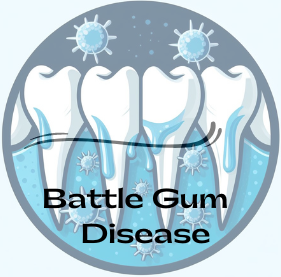
The unwelcome visitor in your mouth that overstays, brings its companions (hello, bacteria!), and settles in too comfortably is gum disease. It is an obstinate enemy that causes pain, inflammation, and a variety of oral health problems that, if ignored, can ultimately result in tooth loss. But don’t worry! A tried-and-true non-surgical procedure called scaling and root planing might be the courageous act your gums need to reclaim their area.
When it comes to dentistry, scaling and root planing work together as a formidable team, reaching far below the gum line to literally root out the source of the issue. By giving your gums a new lease on life, this procedure will help them fend off gum disease and preserve your teeth for a little while longer. Let’s explore why this process works so well and why it’s not quite as frightening as it seems.
What Exactly Are Root Planning and Scaling?
“Deep cleaning,” which includes scaling and root planing, is more than just a routine dental cleaning. Think of scaling as a powerful cleanser for your teeth and gums that gets rid of the tartar, or hardened plaque, that is impossible to remove with brushing alone. In contrast, root planing involves your dentist smoothing off rough areas on the roots of your teeth, much like polishing. Gum disease finds it more difficult to adhere to your teeth when these rough areas are smoothed because they might serve as a haven for bacteria.
Although the scalers, curettes, and ultrasonic instruments used in this operation may seem a little scary, they are actually handled by trained dental professionals who understand just how to thoroughly and gently cleanse your teeth. Before they dive in, they’ll make sure you’re nice and numb, so you can relax!
What Makes This Treatment Necessary?
Consider plaque as a minor annoyance that develops into a major problem if ignored. When plaque and tartar begin to accumulate beneath the gum line, it can lead to infection and inflammation, which is the first sign of gum disease. This accumulation is similar to a pothole in your driveway in that it starts off little but, if left unattended, grows into a major problem that needs to be fixed right away.
The goal of scaling and root planing is to address the issue before it becomes a dental renovation job. By eliminating germs and plaque, this treatment can help prevent gum disease from developing to more severe stages that call for more involved (and frequently expensive) care.
What Happens During the Scaling and Root Planing and Procedure?
Depending on how severe your gum disease is, scaling and root planing may take place over the course of one or more appointments. To keep you comfortable, the procedure normally begins with a complete numbing; you might even think you’re receiving a dental spa treatment!
Your dentist or hygienist will first perform the scaling procedure, which involves removing plaque and tartar from both above and below your gum line. Consider it as a thorough cleaning of your teeth that goes beyond your regular brushing schedule. After scaling is finished, root planing smoothes out any uneven surfaces on your teeth’s roots, making it harder for germs to survive. Your gums are prepared to repair and more firmly adhere to your teeth by the final stage.
Recovery and Aftercare Tips
For a few days following scaling and root planing, your gums may feel sensitive. Treat them with kindness—don’t give them ice cubes, don’t give them crunchy treats, and maybe don’t give them popcorn! Use any recommended mouthwash to keep your mouth clean, brush softly, and rinse with a saltwater solution to aid with recuperation.
Your mouth may feel cleaner and fresher than it has in a long time, and you may notice that your gums feel tighter as they begin to mend. You can keep your gums healthy and stop plaque from re-entering by brushing, flossing, and maybe scheduling a follow-up visit.
How Frequently Should You Receive This Treatment?
The frequency of scaling and root planing depends on your unique gum health. Some people might only need it once, while others with chronic gum disease may benefit from regular treatments. Imagine it like car maintenance—nobody wants to do it, but it’s worth it when it keeps you on the road (or in this case, keeps your teeth in place!).
Depending on your complete gum health, the manner in which you take care of your teeth, and even your lifestyle choices, such as your diet or smoking habits, your dentist can help you choose the optimum timetable.
My Final Thoughts
Although scaling and root planing may not be the most glamorous dental procedures, they are among the best methods for controlling gum disease. Consider this procedure as a simple yet crucial investment in your dental health that will prevent you from requiring more involved procedures in the future. It’s also the best approach to maintain the health and strength of your gums.
It’s worth battling for your gums! By including scaling and root planing in your oral hygiene regimen, you’re providing them with the support they require to be strong, content, and affixed to your teeth. So, the next time gum disease tries to make itself at home, you’ll be ready to show it the door—scalers and all!
“Here’s a little transparency: Our website contains affiliate links. This means if you click and make a purchase, we may receive a small commission. Don’t worry, there’s no extra cost to you. It’s a simple way you can support our mission to bring you quality content.”
